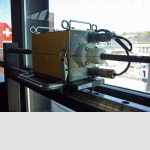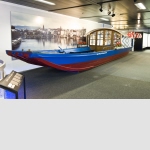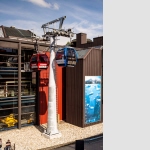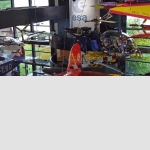Collection Online
Portfolio
-

-
- The magneto-inductive cable test
The cable is the most important structural element of the ...
- Ernst Kündig AG (1962), Manufacturer, archivalisch belegt
- Inv. Nr. VHS-9108
- more
-
-

-
- Ferryboat “Vogel Gryff” of the Basel Klingental Ferry Service, built 1962
From Greater- ...
- Fähri-Verein Basel (Verein Freunde Basler Fähren) (1974), Model operator, archivalisch belegt
Johann Waldmeier AG Bootbau und Sport (1974), Model manufacturer, archivalisch belegt
- Inv. Nr. VHS-9157
- more
-
-

-
- Aerial cableway mast with two circulating gondolas, 2016
One means of transport conquers ...
- Garaventa AG, Manufacturer, archivalisch belegt
CWA Carrosseriewerke Aarburg AG (*1939), Manufacturer, archivalisch belegt
Doppelmayr Seilbahnen GmbH (*1939), Manufacturer, archivalisch belegt
- Inv. Nr. VHS-11948
- more
-
-

-
- Aérospatiale SA 315B Lama helicopter HB-ZGP, France 1974
Flying workhorse
The multi-purpose ...
- Alpinlift Helikopter AG (2005), Operator or user, archivalisch belegt
Aérospatiale (-Matra) (1970 - 2000), Manufacturer, archivalisch belegt
Turboméca (1938), Engine manufacturer, archivalisch belegt
- Inv. Nr. VHS-12204
- more
-

